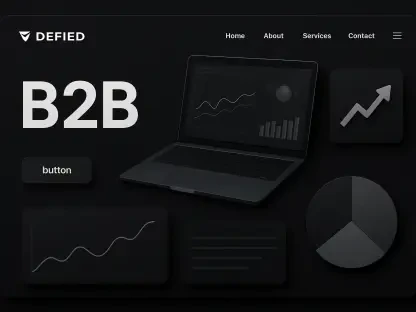Scrolling from discovery to decision now happens inside a single feed where a photo, a caption, and a comment thread can replace storefront signage, sales staff, and the checkout line all at once. For small businesses, that shift is not theoretical; it is measurable in how people actually behave on Facebook, TikTok, Instagram, YouTube, and even Reddit, where discovery, evaluation, and purchase increasingly converge in one seamless path. The center of gravity has moved into short-form video, social SEO, and native shopping, and the rules that govern trust have moved with it.
This report examines that reality through the lens of U.S. consumers, using a Signs.com survey of 1,000 users and broader sentiment on AI, privacy, and platform policies as context. The findings reveal a market that rewards authenticity over automation, proof over polish, and channel choices tailored to generation. The playbook that works today aligns content to how people actually decide—fast, visually, and with clear evidence—instead of how brands wish they decided.
The implications extend beyond creative choices. Recommendation engines now function as search, platform rules shape disclosure and commerce, and AI is powerful behind the scenes but precarious in the public square. Marketers who map audience, message, and format to these realities convert attention into trust, and trust into sales.
The Social Storefront: Current State, Scope, and Significance
Social platforms have matured into end-to-end storefronts where users discover businesses in the feed, vet them through comments and reviews, and buy via native shops or frictionless links. That consolidation compresses the funnel and raises the bar for relevance in the first seconds of a post. The most effective paths feature clear outcomes on screen, human voices in frame, and details that remove doubt in the moment of consideration.
The scope here centers on U.S. consumers, with the Signs.com study as the quantitative backbone and platform-level dynamics as the operating environment. Core segments include small businesses competing for attention, consumers grouped by generation, creators and influencers acting as distribution, and the platforms whose algorithms and policies control reach. Short-form video, social SEO, native shopping, and AI-assisted production now define the technical canvas.
Market leadership reflects this blend. Meta, TikTok, and YouTube anchor distribution, creator ecosystems supply content at scale, and reviews, ratings, and social commerce integrations convert curiosity into orders. Regulatory forces—FTC endorsement rules, privacy laws, and platform policies—frame trust and compliance. Aligning content with these currents is not a creative preference; it is a performance necessity.
Dynamics of Demand: Trends and Performance Signals
Trends Reshaping Discovery, Trust, and Attention
Social has become the primary storefront and search layer, with discovery embedded in feeds, reels, and comments. Generational patterns drive channel strategy: Gen Z and Millennials cluster on TikTok and Instagram, while Gen X and Boomers remain anchored to Facebook with YouTube bridging cohorts; Reddit adds a meaningful niche for Gen Z. The path to purchase runs through peer validation and clarity, not glossy claims.
Authenticity beats automation across feeds. User-generated content, testimonials, and straightforward product information consistently outrun highly produced or AI-saturated creative. Proof-led formats—demos, before-and-afters, and relatable stories—win attention because they answer real questions fast. Meanwhile, skepticism of visible AI has grown, especially among Gen Z, and unlabeled or overused AI can quietly drain credibility even when production quality looks high.
Attention is scarce and front-loaded. With nearly half of users giving a post ten seconds or less, the opening beats must deliver relevance and outcome in-frame. Strong hooks paired with concrete evidence outperform trend-only riffs, and humor works best when tethered to utility. The lesson is simple: lead with what matters, then show it—not just say it.
Market Data, Indicators, and Forward Outlook
Discovery patterns reflect platform habits. Facebook still leads overall, with 61% of respondents reporting they discovered a small business there in the prior six months. Gen Z discovery skews to TikTok at 76% and Instagram at 70%, with Reddit contributing at 27%. Millennials straddle ecosystems—Facebook at 69%, Instagram at 54%, and YouTube at 53%—while Gen X and Boomers prioritize Facebook and lean into YouTube for certain categories.
Trust signals are clear. UGC ranks as the top builder at 31%, while brand visuals that emphasize clarity account for 27%. Influencer endorsements matter at 20% overall and rise to 30% among Gen Z. Red flags are equally distinct: AI-generated content reduces trust for 48% of users and 64% of Gen Z; stock photos erode confidence for 41%; missing details or pricing worry 38%; and overly polished imagery—absent substance—undercuts credibility for 38%.
Engagement and conversion mirror those preferences. Forty-nine percent of users decide within ten seconds, and scroll-stoppers are testimonials, personal stories, humor with relevance, and before-and-afters. Reviews and testimonials drive 52% of conversions; demos and tutorials drive 43%. Gen Z responds to trend-led cues when paired with proof, Millennials value reviews and occasionally giveaways, and older cohorts favor demos and behind-the-scenes content that reduce perceived risk. Looking ahead, strategies that match platforms to generations and put proof at the core will compound results, while AI use will require cautious disclosure and human creative judgment.
Obstacles in the Feed: Challenges and Practical Solutions
The attention crunch and algorithm volatility create inconsistent reach, making the first three seconds decisive. Outcome-first hooks, tight structure, and iterative testing of openers stabilize performance. Posts that reveal the payoff immediately earn the seconds needed to explain why.
Trust remains fragile in a climate of AI skepticism, stock imagery fatigue, and incomplete product information. Featuring real customers, clear pricing, specs, and shipping details tackles the biggest doubts directly. That transparency doubles as a conversion accelerator, shrinking the gap between curiosity and checkout.
Fragmentation across generations makes single-channel plans underperform. Building channel-specific plays—TikTok and Instagram for younger users, Facebook and YouTube for older cohorts, with Reddit as a Gen Z niche—creates leverage. Measurement must keep pace: disciplined UTMs, social-specific landing pages, and assisted-conversion tracking reveal the true impact of “seen on social, bought later.”
Resource constraints pressure small teams to produce more with less. UGC programs, testimonial pipelines, lightweight demo templates, and creator partnerships provide scalable inputs without sacrificing authenticity. To minimize creative fatigue and trend churn, blend timely openers with enduring proof and utility. Finally, connect content to commerce with explicit CTAs, native shop features, and smooth mobile checkout to prevent drop-off at the finish line.
Compliance, Disclosure, and Platform Governance
Regulatory guardrails define how credibility is earned. FTC endorsement rules require clear disclosure of paid partnerships and typical results, and consumer protection standards demand claims be substantiated—especially in demos or before-and-afters. Data privacy laws obligate respectful handling of consent and user content permissions.
Platform policies shape execution as much as strategy. Branded content tools, community guidelines, music and IP licensing, and shopping rules affect what can run and how far it can reach. AI transparency is emerging as a norm; labeling synthetic assets, keeping human review in the loop, and explaining context where needed help preserve trust.
Accessibility is both compliance and growth. Captions, alt text, readable design, and inclusive language expand addressable audience and reduce friction. The net effect is a content system that meets standards while signaling reliability, which translates into higher engagement and safer scale.
What’s Next: Technology, Disruptors, and Growth Paths
Shoppable video, live shopping, social SEO, and messaging-led commerce are turning feeds into interactive storefronts. Creator marketplaces make UGC procurement efficient, letting brands capture real voices at scale without inflating production. As TikTok Shop grows and Instagram and Facebook refine Shops, the path from inspiration to purchase shortens even further, with YouTube Shopping integrating proof and purchase inside long- and short-form video.
Consumer preferences continue to privilege real people, practical utility, and transparent information. AI retains a bounded but valuable role: accelerating workflows, helping with variations and editing, and supporting analysis, while public-facing creative stays unmistakably human. That balance reduces risk while retaining speed.
Macroeconomic pressures and privacy shifts will keep reshaping ad pricing and measurement. The durable growth areas are review-centric storytelling, demo-first creative, micro-influencer collaborations that feel native to the community, and content series built around outcomes. Strategies that systematize proof earn compounding returns because they build trust as an asset, not just a tactic.
Conclusion and Strategic Recommendations
The evidence showed that social functioned as the storefront where discovery, evaluation, and purchase converged, and performance hinged on authenticity, clarity, and proof. Effective plans mapped audiences to platforms, limited visible AI to protect credibility, and led with outcomes in the first seconds. The strongest conversion engines assembled UGC pipelines, demos, before-and-afters, and clear CTAs, then removed friction with consistent pricing, specs, shipping info, and native checkout.
Next steps pointed to multi-platform strategies aligned to generational behavior, measurement that captured assisted conversions, and creative systems that blended trend-aligned openers with durable proof. Investment priorities favored Facebook and YouTube depth for older cohorts, TikTok and Instagram substance with smart hooks for younger audiences, and selective Reddit plays for Gen Z niches. In a fast-scroll, high-skepticism environment, trust had compounding value; the brands that treated it as the core product of their content stood to grow fastest.









